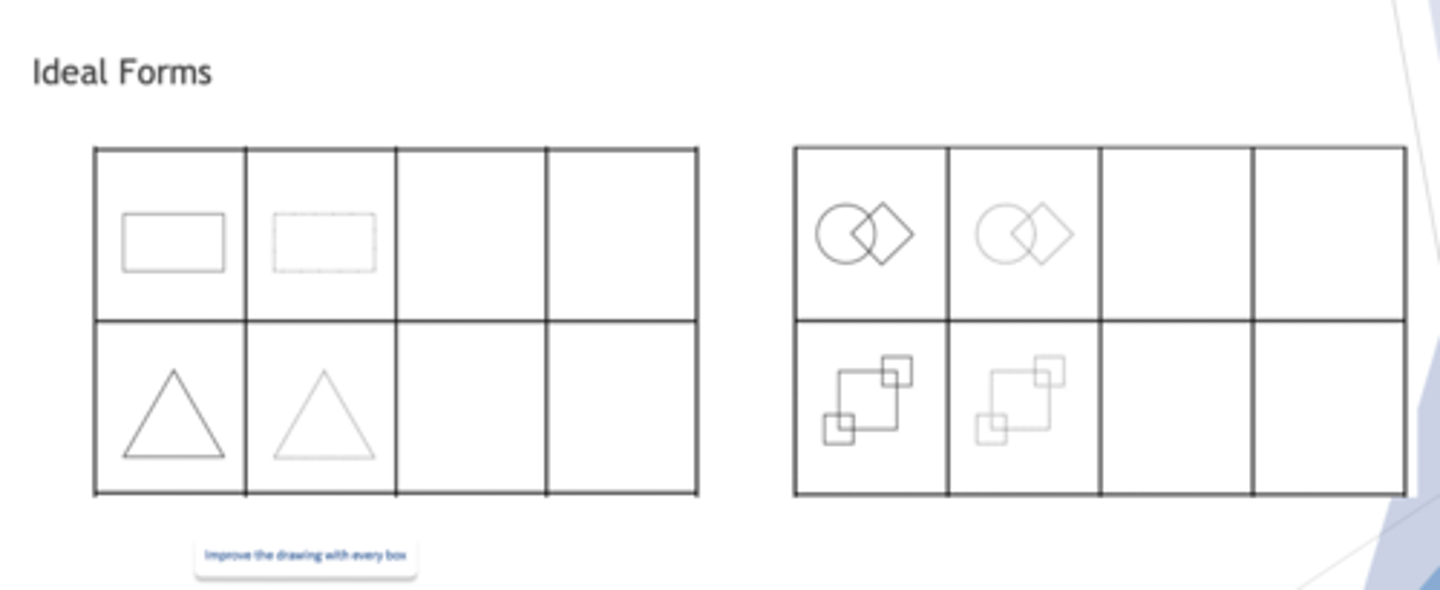Lec#16: Visual Information Processing VIP Treatment
1/56
There's no tags or description
Looks like no tags are added yet.
Name | Mastery | Learn | Test | Matching | Spaced |
|---|
No study sessions yet.
57 Terms
what is the sequencing guideline for visual spatial skills?
1. bilateral integration
2. laterality
3. directionality
what is the goal of training bilateral integration?
improve the pts motor planning ability by performing isolated, simultaneous and sequential movements of the two sides of the body
what are 4 activities to train bilateral integration?
- ball bounce
- mental body map (similar to angels in the snow)
- slap tap
- Randolph shuffle
slap tap level 1 and 2
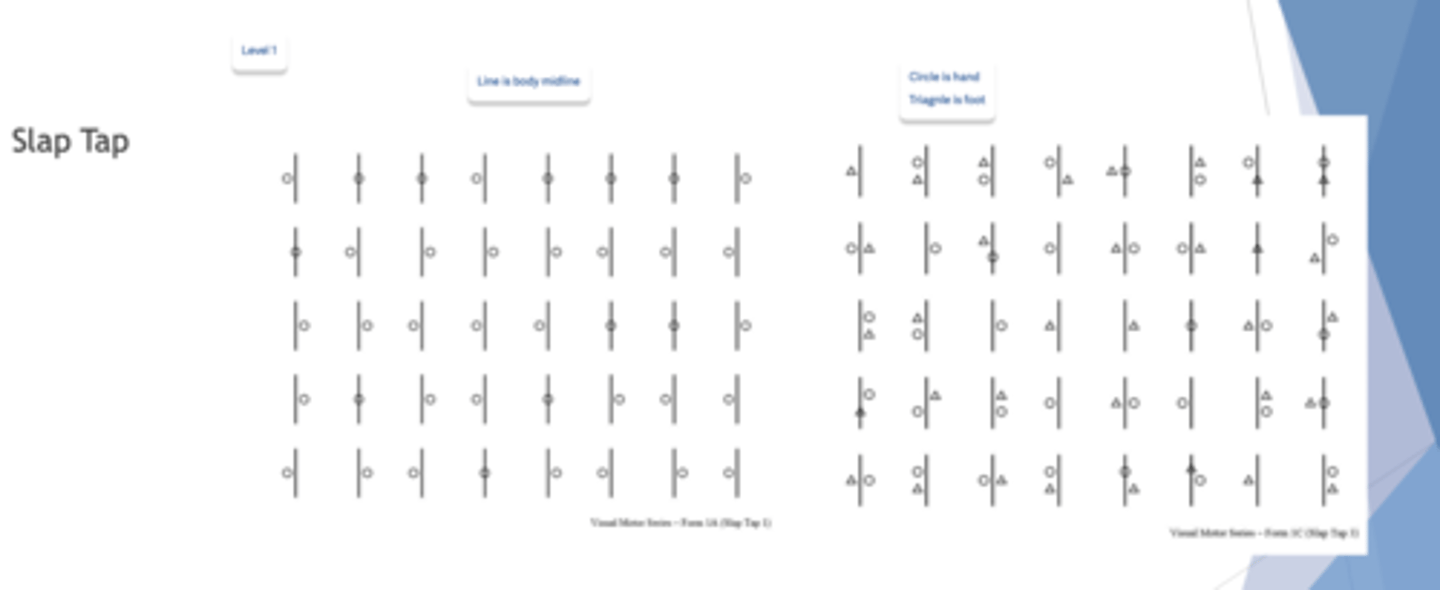
what is the goal with training laterality?
develop the pt internal awareness of how the right side is different from the left side into concepts that the pt can express orally
what are 3 activities to train laterality?
- asking questions: which hand to you write with?
- simon says with right and lefts on pt
- floor map
floor map acitivity
pt says if they are moving right or left as they move through the floor map
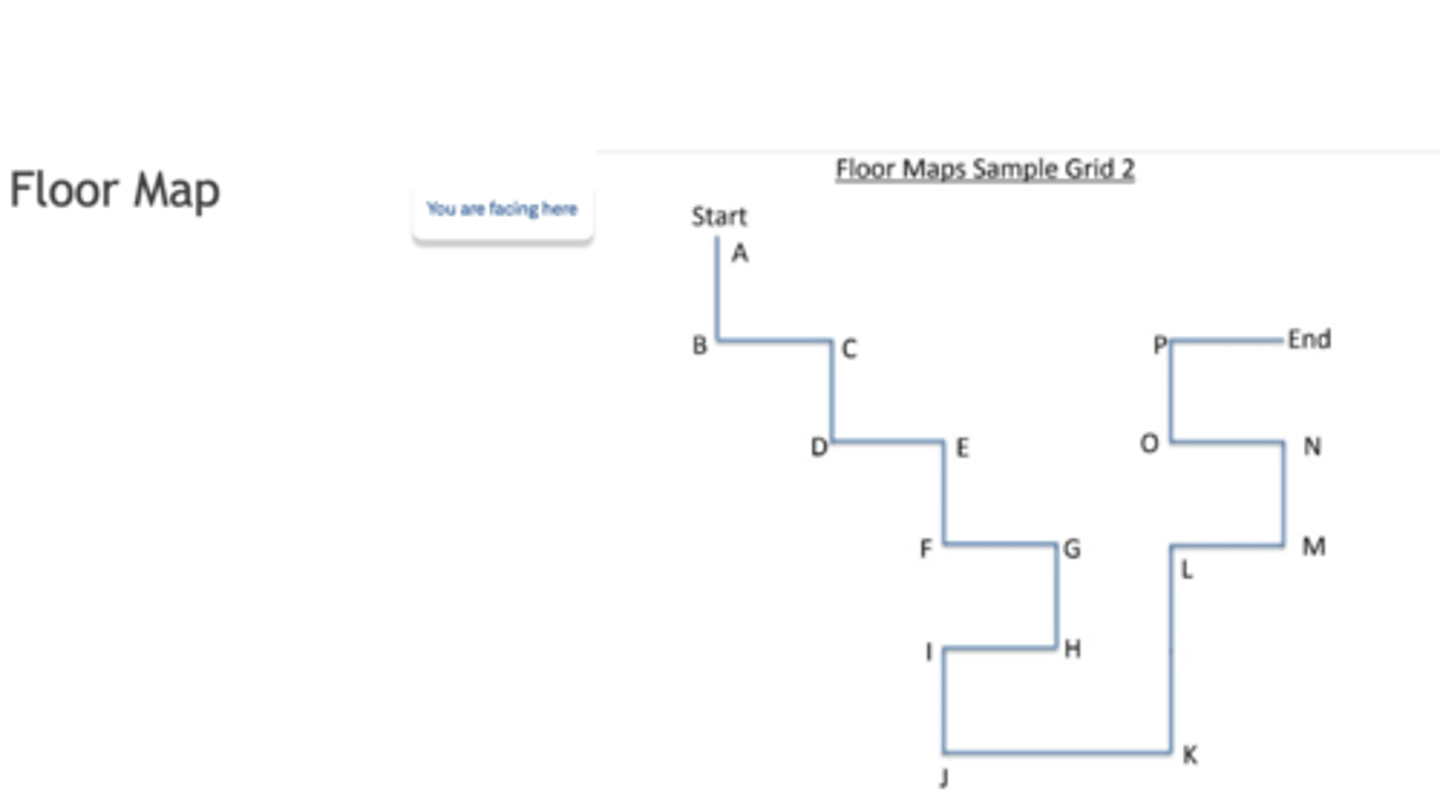
what is the goal of training directionality?
develop the ability to use directional concepts to organize external space
lefts and rights on objects and other people
what are 4 procedures for directionality training?
- kirscher arrows
- directional mazes
- floor map II (pt directs therapist thru the floor)
- letter find
floor map 2
(pt directs therapist thru the floor)
this is directionality training
what are the 4 levels of Kirshner arrows from easy to hard?
1. do say say the same
2. do opposite say opposite
3. do same say opposite
3. do opposite say same
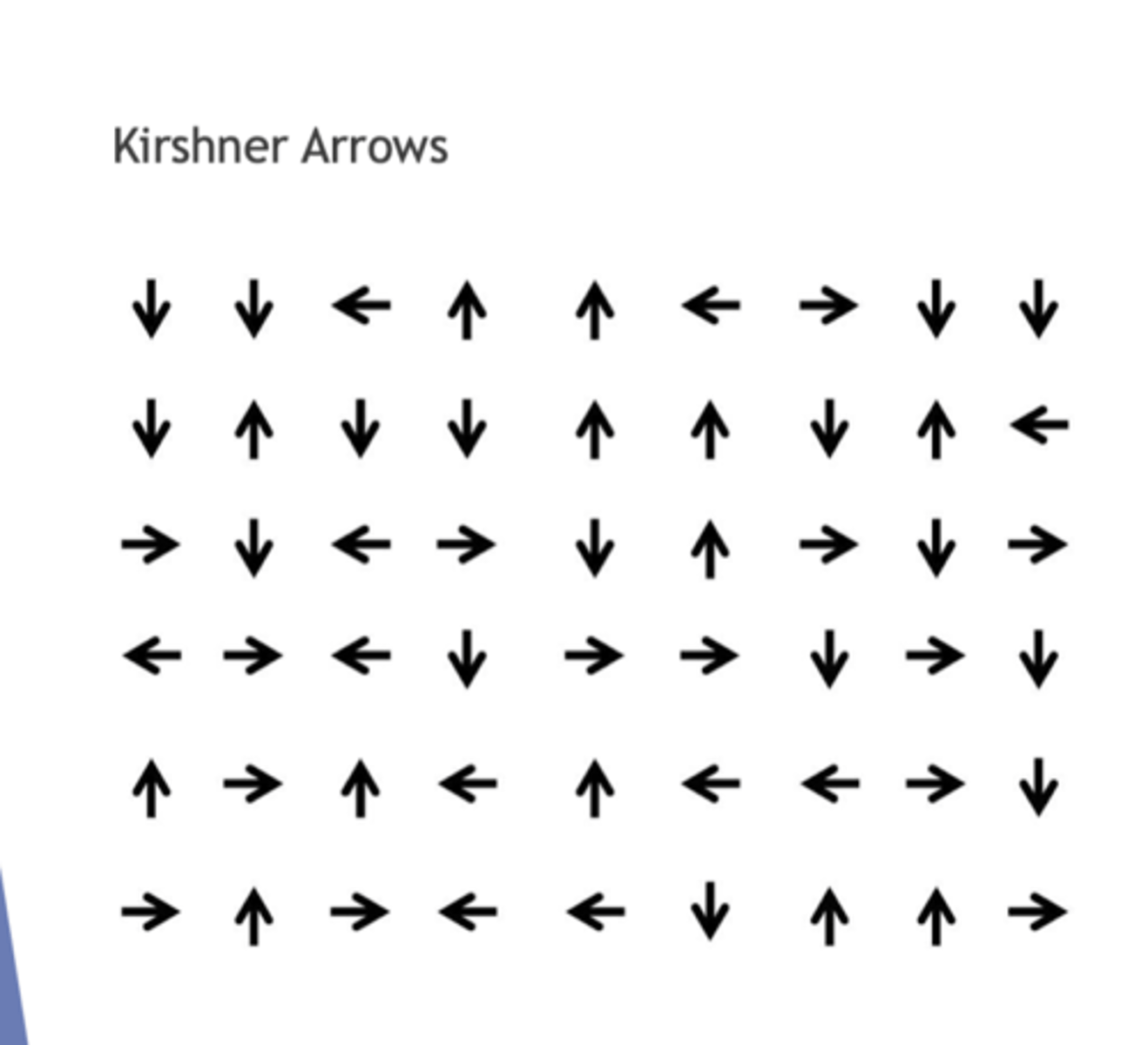
Directional Mazes- trains directionality
need to walk the mouse in the maze
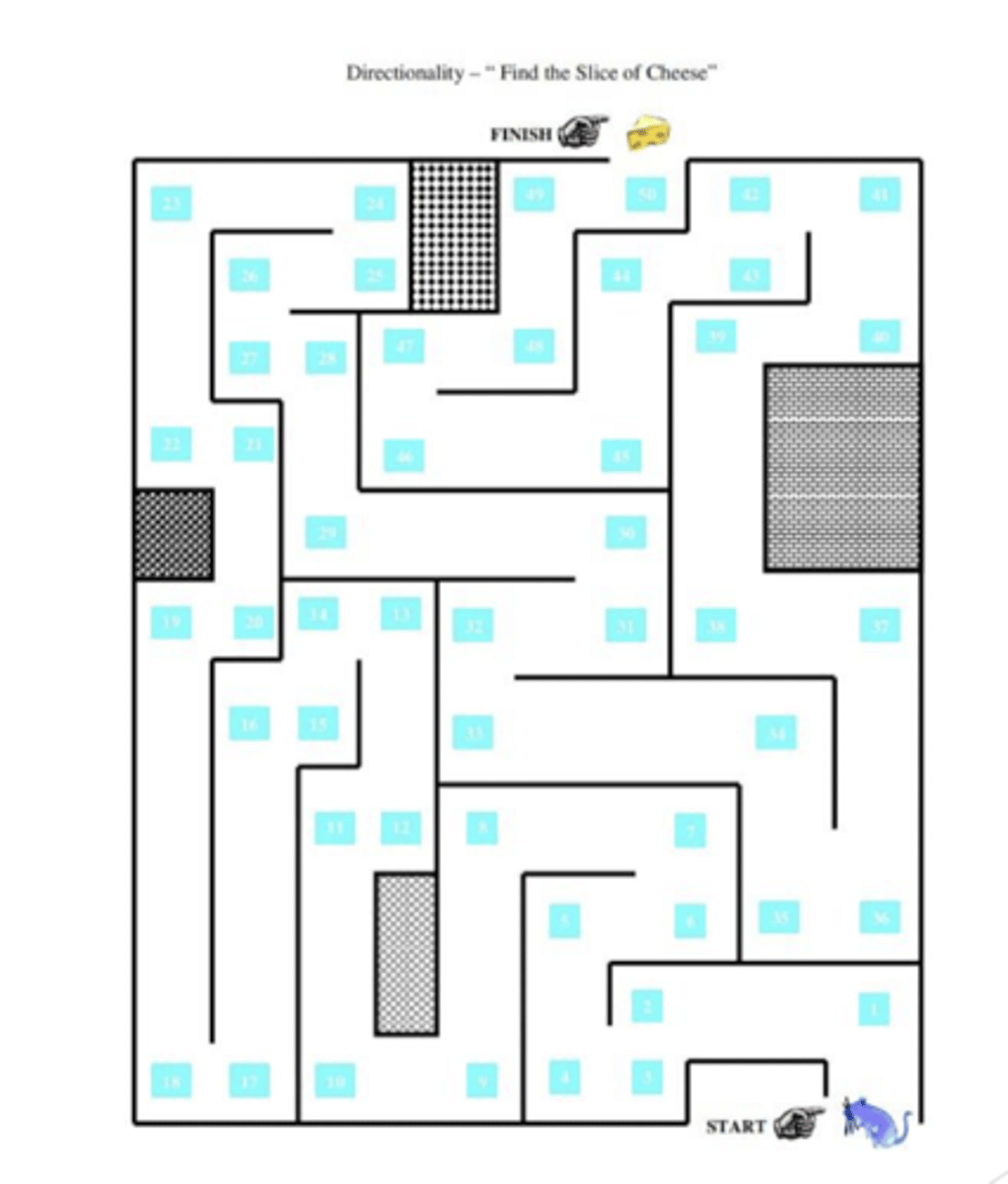
letter mazes
work on letter reversals too
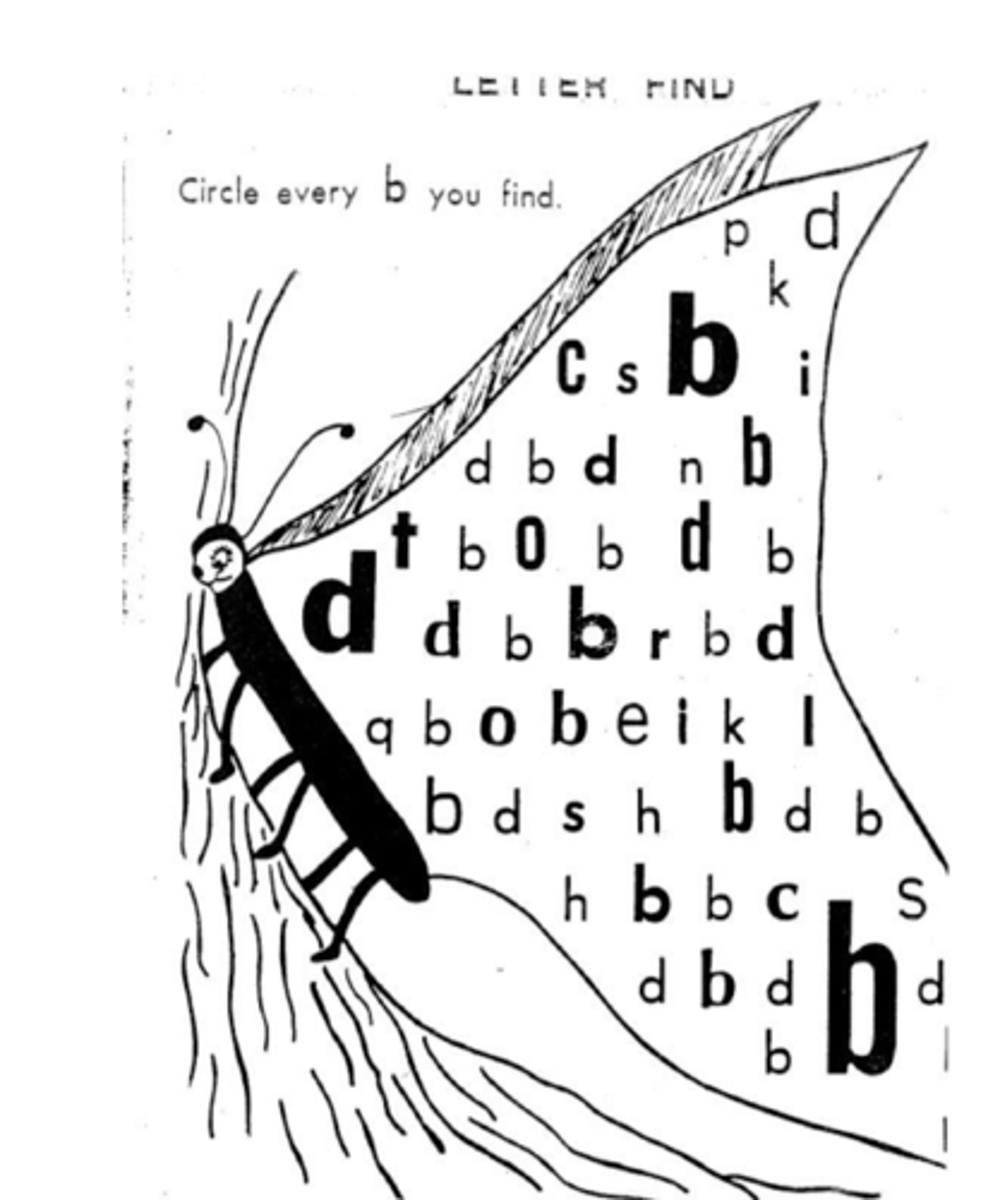
what is the sequencing guideline for visual analysis skills?
1. visual discrimination
2. visual figure ground
3. visual closure
4. visual memory
5. visualization
what is the goal of visual discrimination training?
develop the pts ability to be aware of distinctive form features, size, shape, color and orientation
- pt can use visual cues to find similarities or differences of forms
what are two procedures to train visual discrimination?
- parquetry blocks level 1 and 2
- geoboard patterns
parquetry blocks levels 1 and 2
these can all the lines and pt builds it on the page- level 1
level 2- have pt build it to the side of the page
- make harder by adding memory component
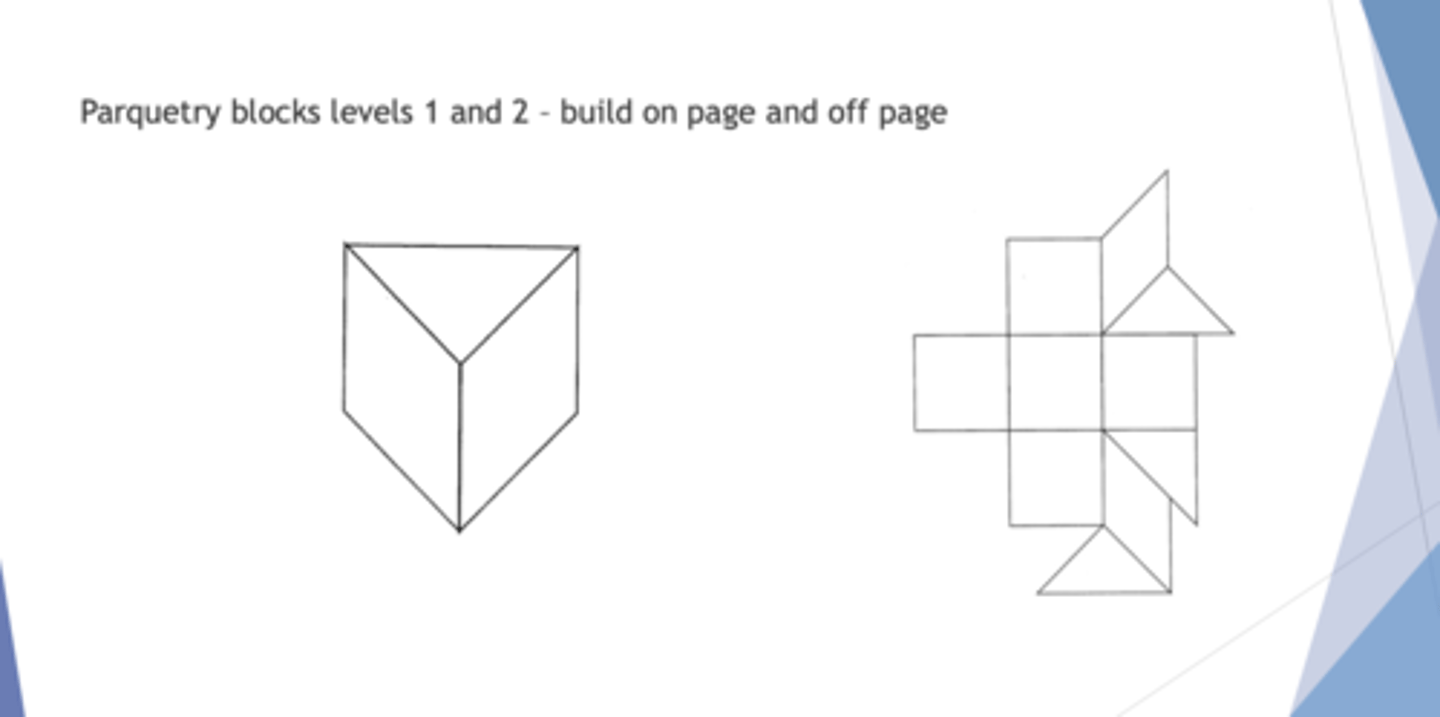
geoboard patterns
- have pt copy the image and can also load by adding memory component
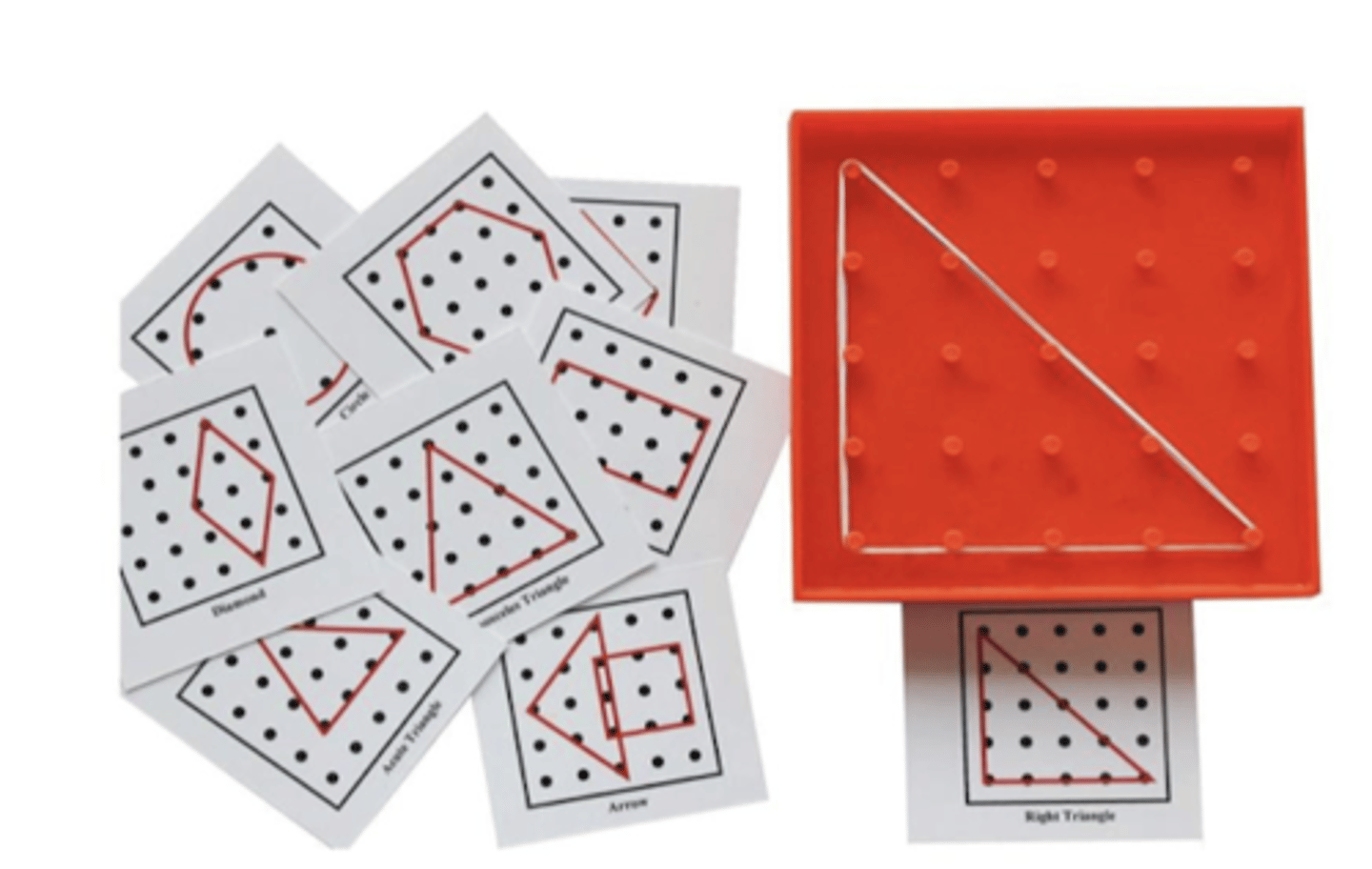
what is the goal with visual figure ground training?
develop ability to attend to a specific feature or form while maintaining an awareness of the relationship of this form to the background information
what are 5 activities to train visual figure ground?
- groffman visual tracings
- jumbled pictures
- hidden pictures
- word searches
- computer visual scan and search
Groffman visual tracing is also used to train what oculomotor skill?
also used for pursuits
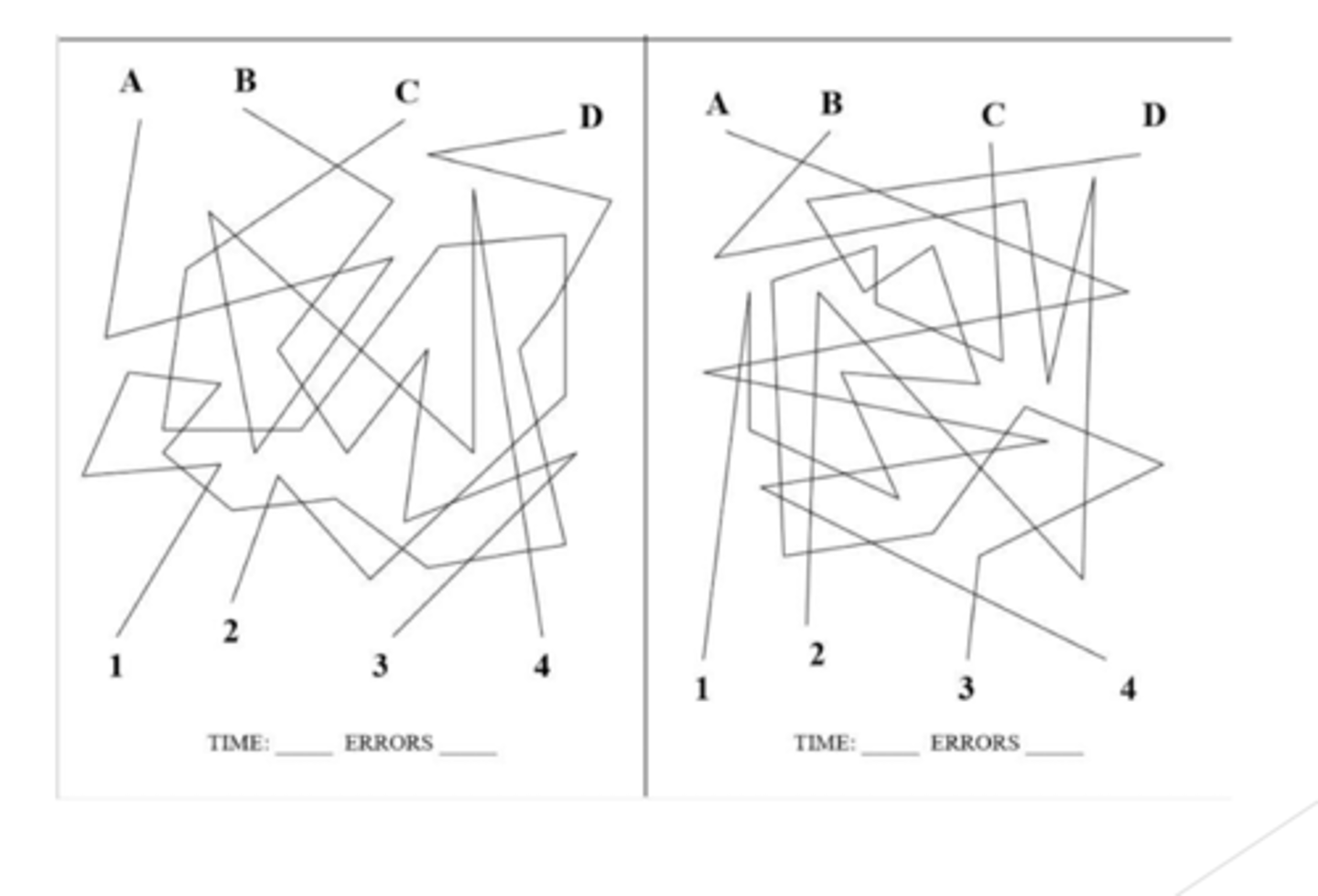
jumbled picture
pt finds the differences between the two pictures
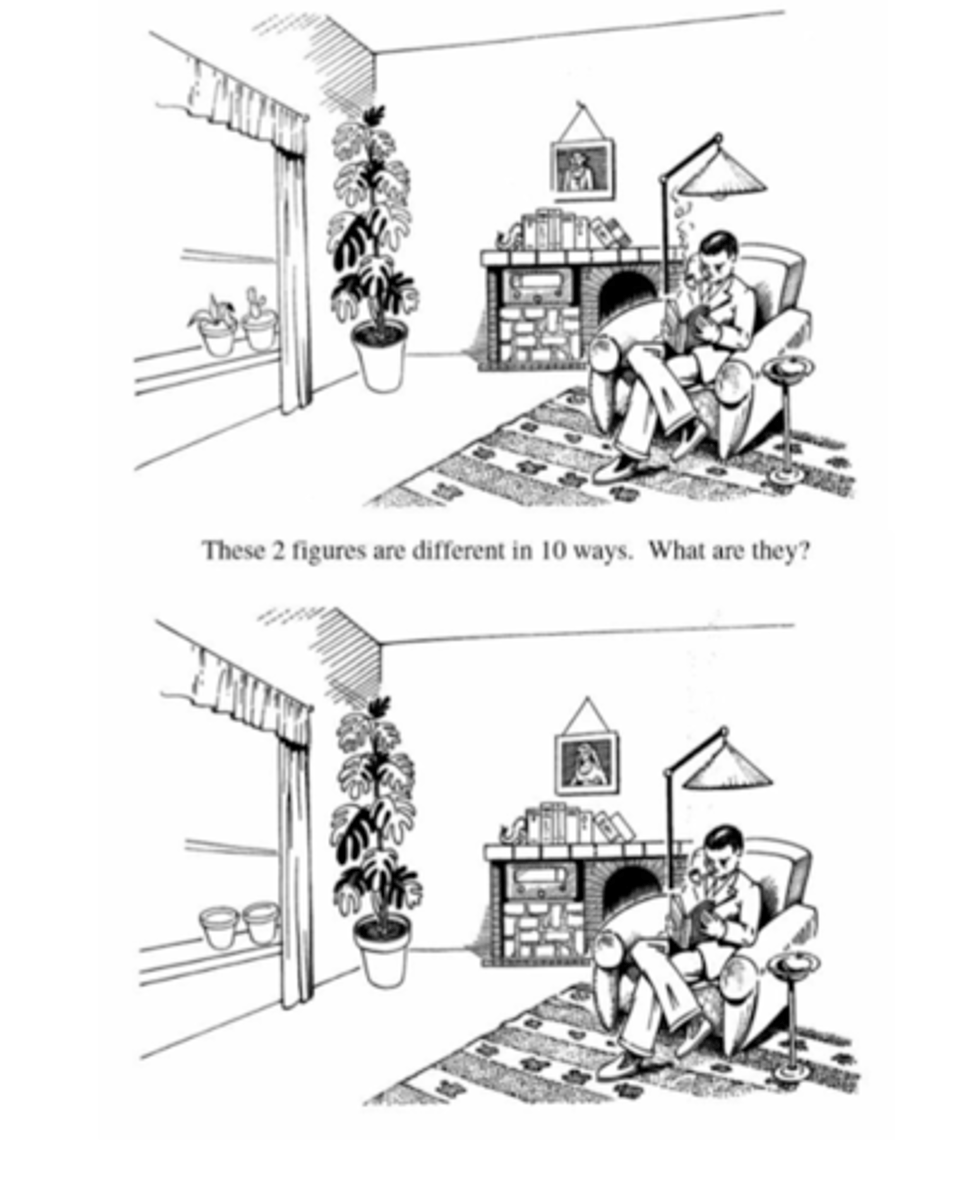
hidden pictures
pt finds objects in the image
word searches

what is the goal of training visual closure?
develop the pts ability to be aware of clues in the visual array that allow them to determine the final picture without all the details
what are 3 activities to train visual closure?
- dot to dot
- parquetry blocks levels 3 and 4
- computer PTS visual program
dot to dot
trains visual closure
have to guess the image without having all the lines
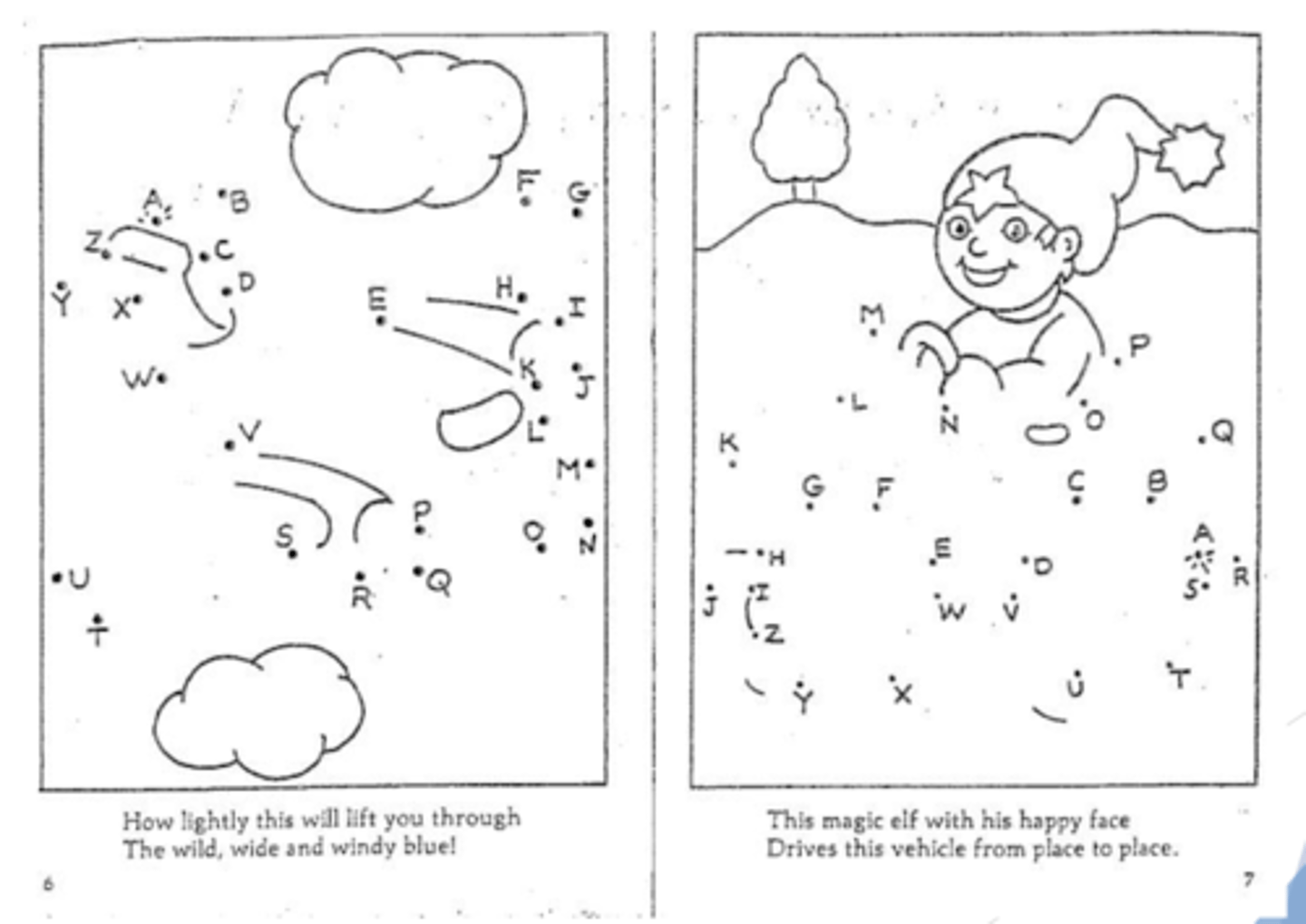
parquetry blocks for visual closure
pt has to fill out the shapes that you give them to make the image
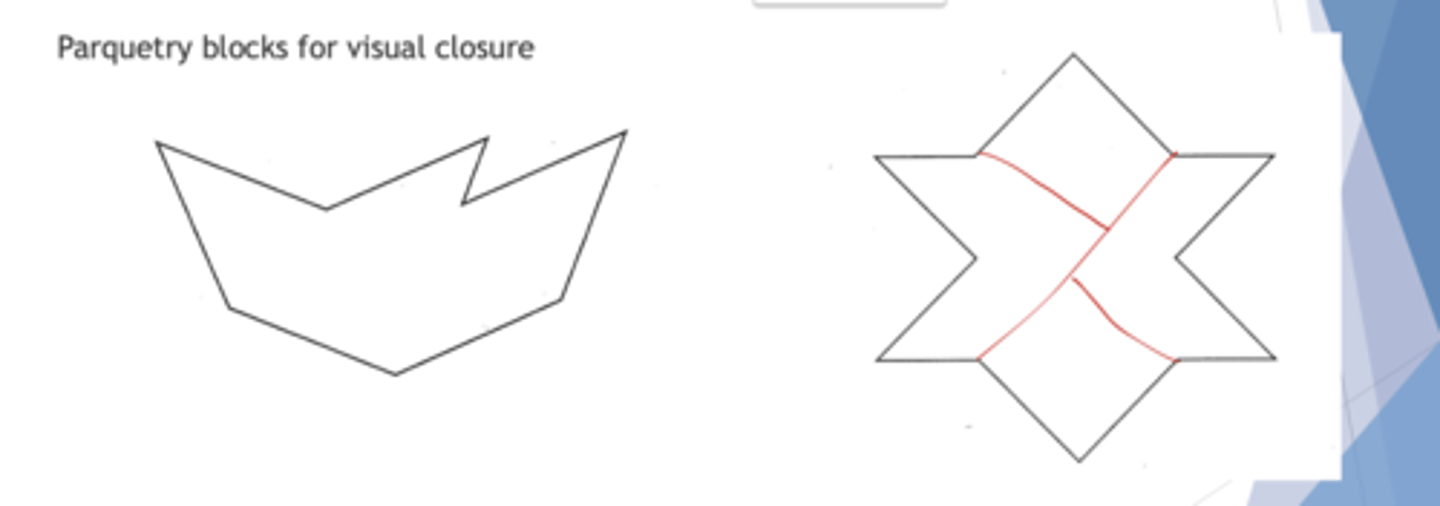
what is the goal of visual memory training?
develop the pts short term memory abilities
what are 4 visual memory tasks?
winterhaven copy form
paraquetry blocks (build from memory levels 1 and 2)
sequential beads
tachistoscope
Winterhaven Copy Forms
trace with finger or chalk, then by memory
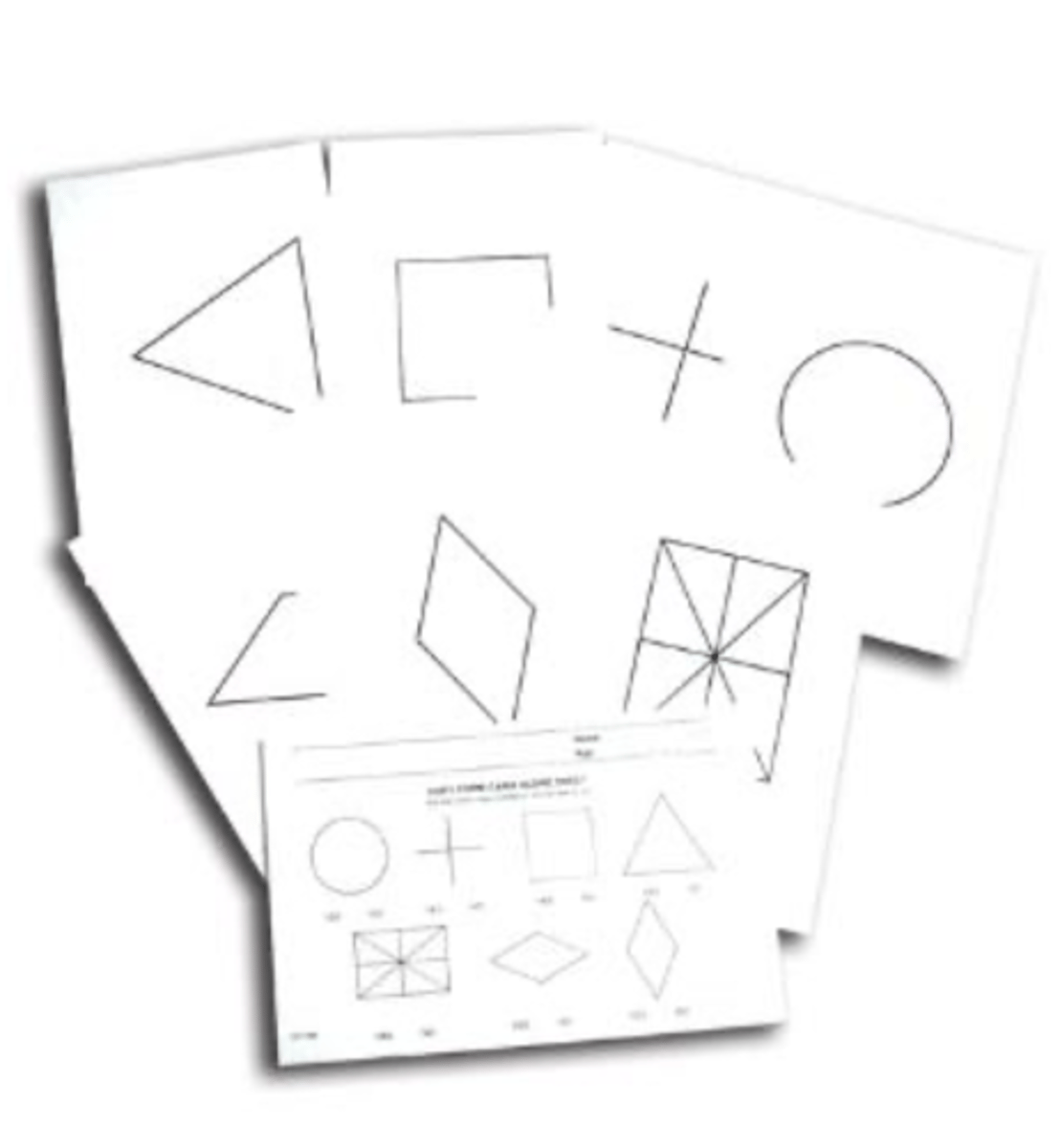
how can you make parquetry blocks levels 1 and 2 visual memory tasks?
have pt fill ill shapes based on memory
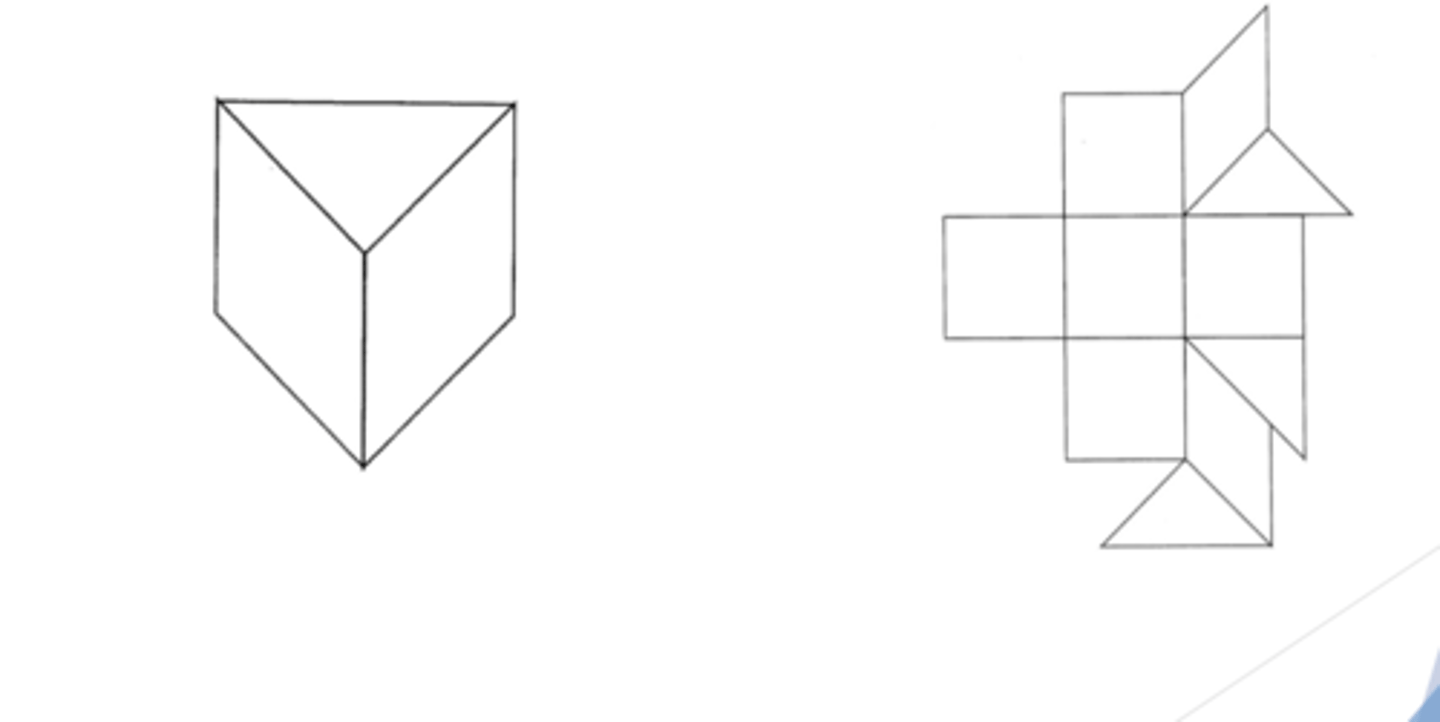
sequential beads
have pt memorize the pattern

tachistoscope
show numbers quickly and then ask them what the sequence was and can load by adding more numbers letters or mix

what is the goal of training visualization?
develop pts ability to recall visually presented material and manipulate these images mentally
what are 3 procedures of visualization?
- golf visualization
- flip forms
- coding games
golf visualization
try to get to the next number with eyes closed make it harder by having them avoid obstacles

flip forms
mentally the pt have to flip the forms and tell you what boxes they would land on
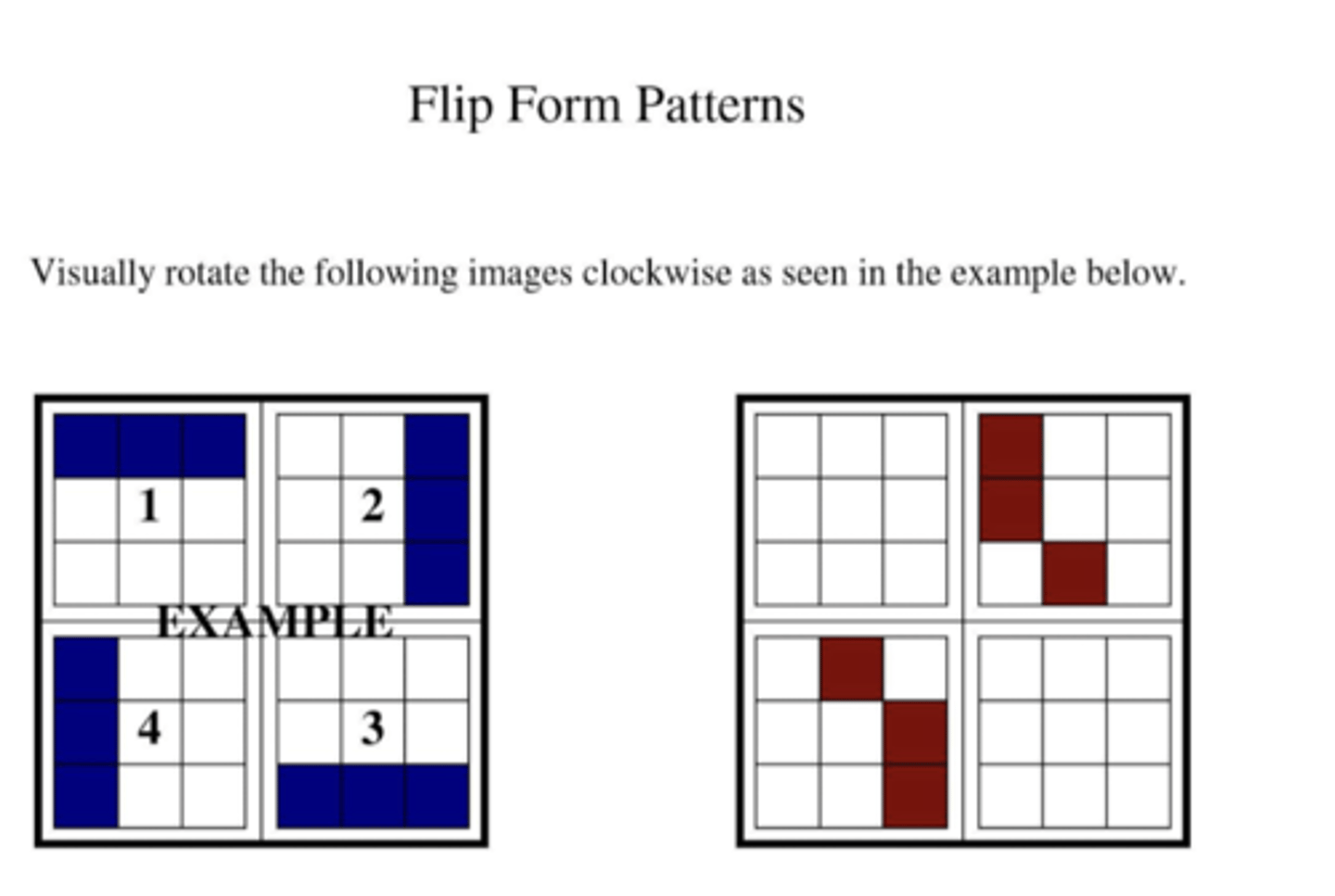
coding
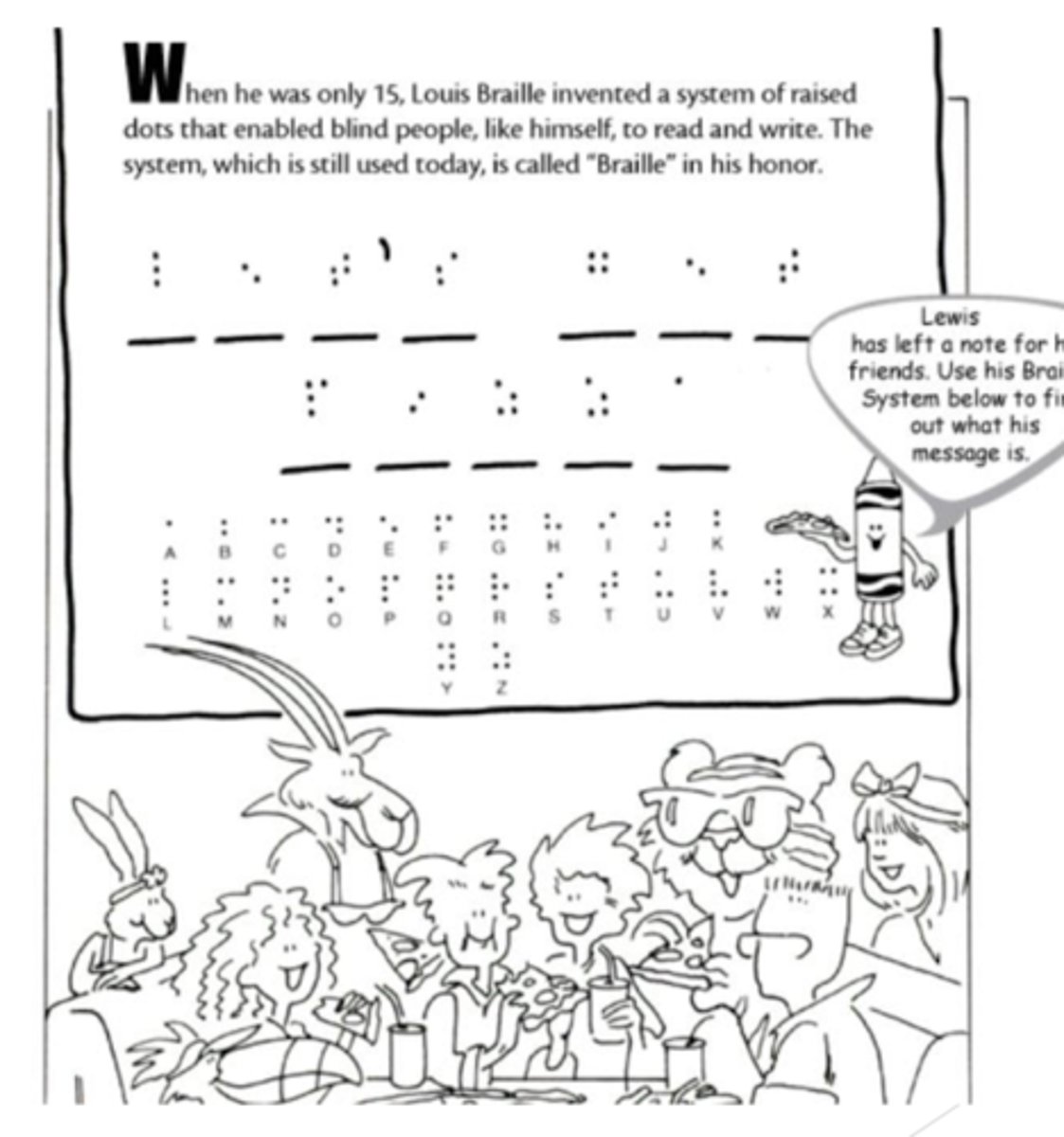
what is the correct sequencing guideline for visual motor skills training?
a. planning of complex spatial patterns
b. visual motor ergonomics/ visually guided fine motor
c. general eye-hand coordination skills
1. general eye-hand coordination skills
2. visual motor ergonomics/ visually guided fine motor
3. planning of complex spatial patterns
what are 3 eye-hand coordination procedures?
- beanbag
- marsden ball visual motor stick procedures
- lacing cards
bean bag toss
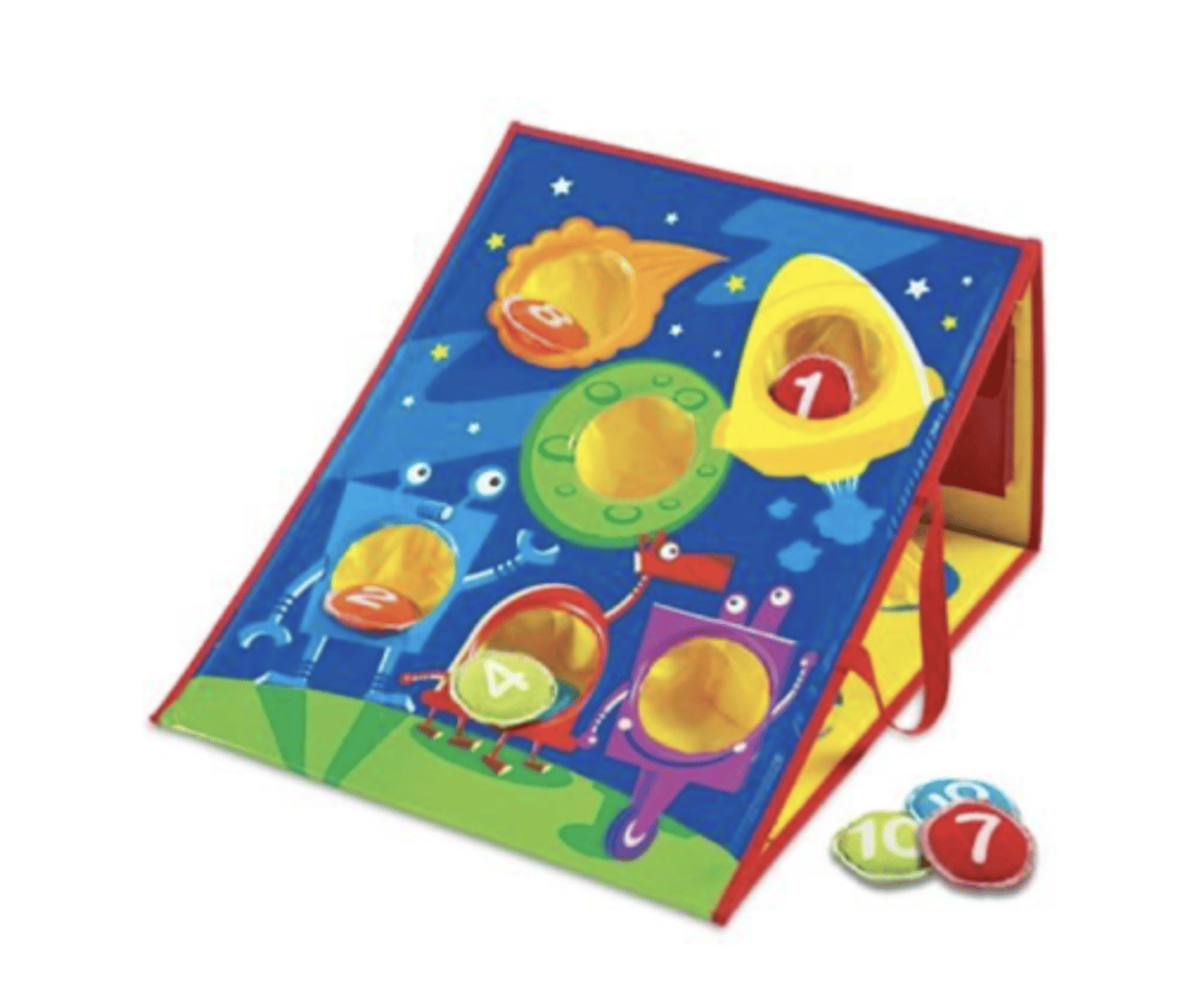
marsden ball with VMI stick
- you tell the pt with what portion of the stick to hit the ball
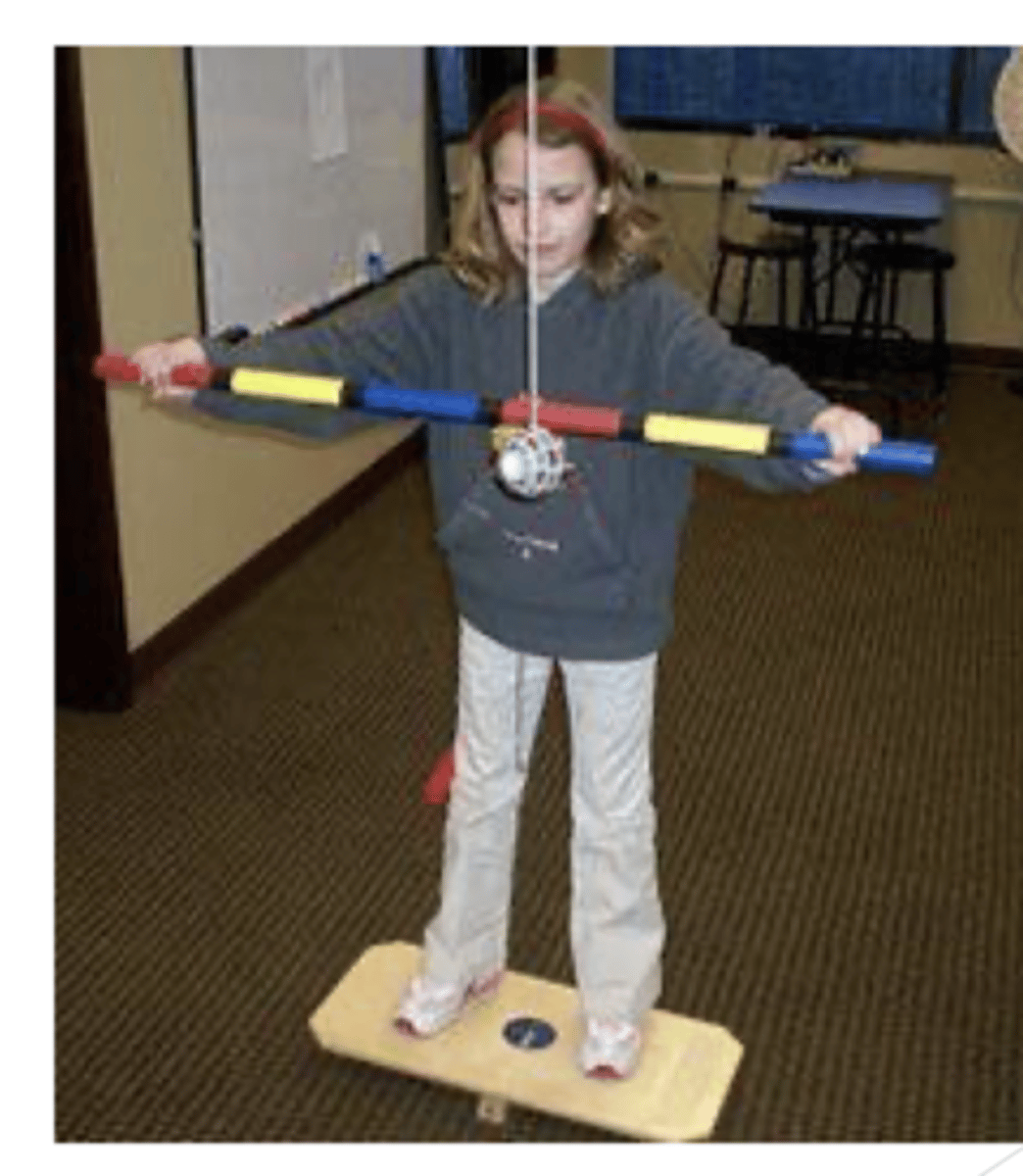
lacing cards
string is laced around the holes of the card
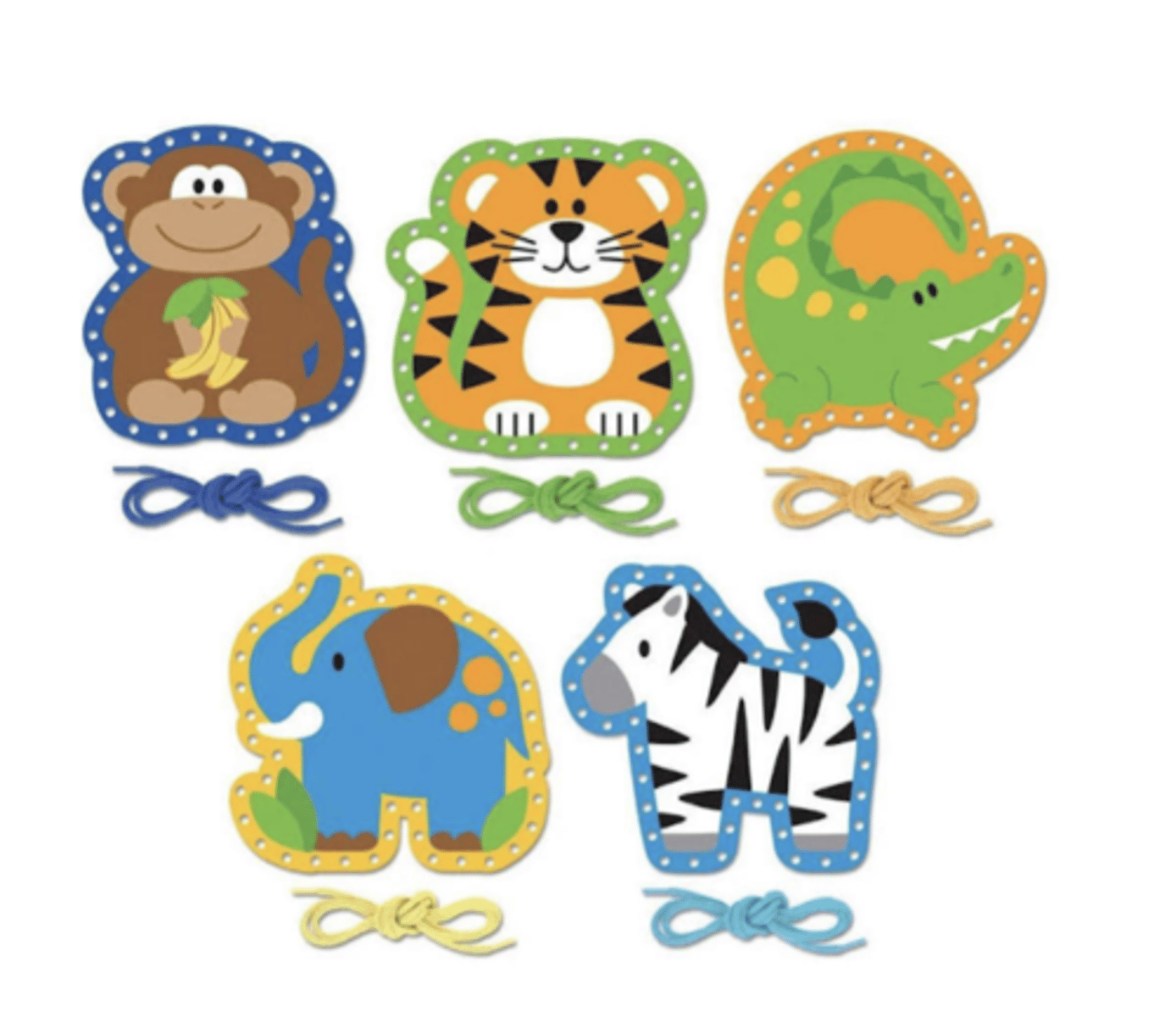
what are visual motor ergonomics?
- not an individual therapy but rather is something we emphasize during any writing activity
what are 3 activities that emphasize ergonomics?
- working at harmons distance
- using dominate hand to write and non-dominate hand to stablize paper
-emphasize tripod grip
where is harmons distance?
from fist to elbow working distance
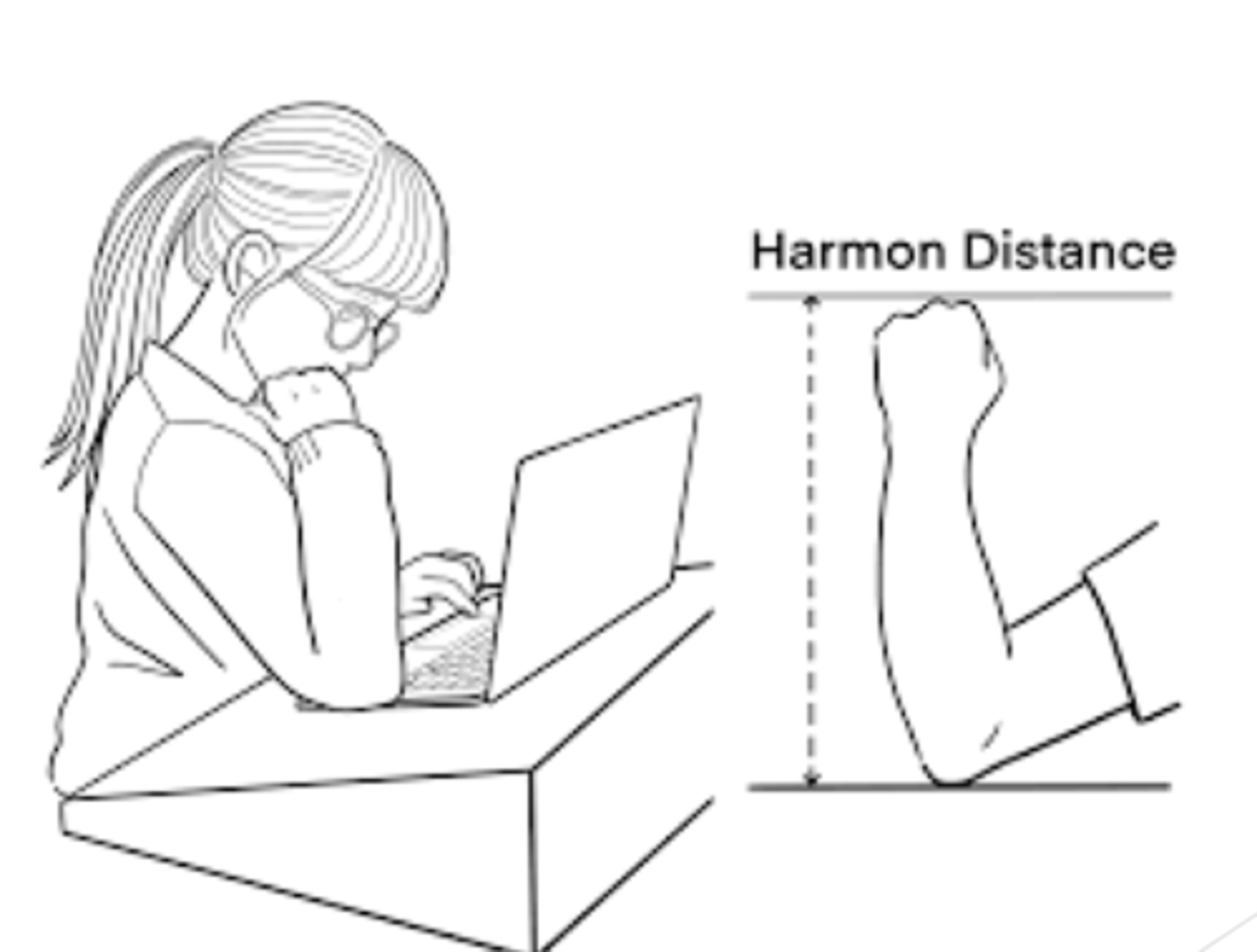
using dominate hand to write and non-dominate to stablize
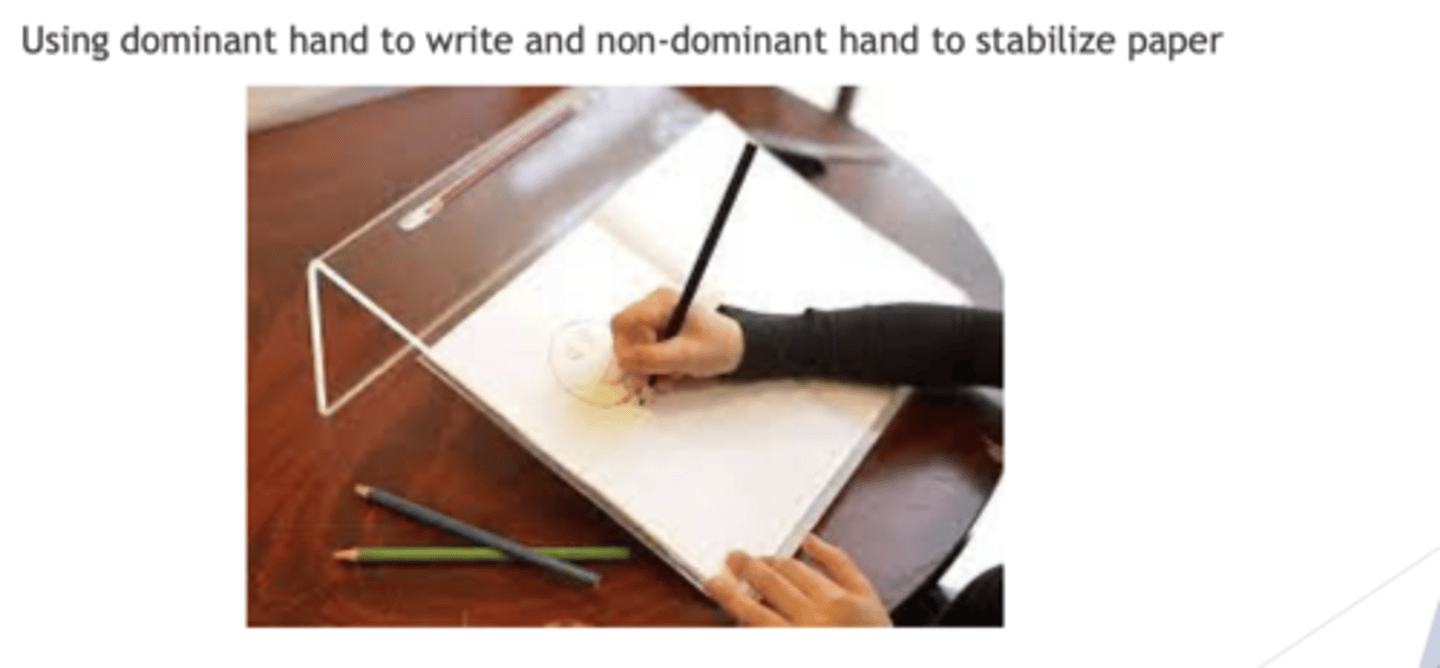
what pencil grip should you emphasize?
tripod grip
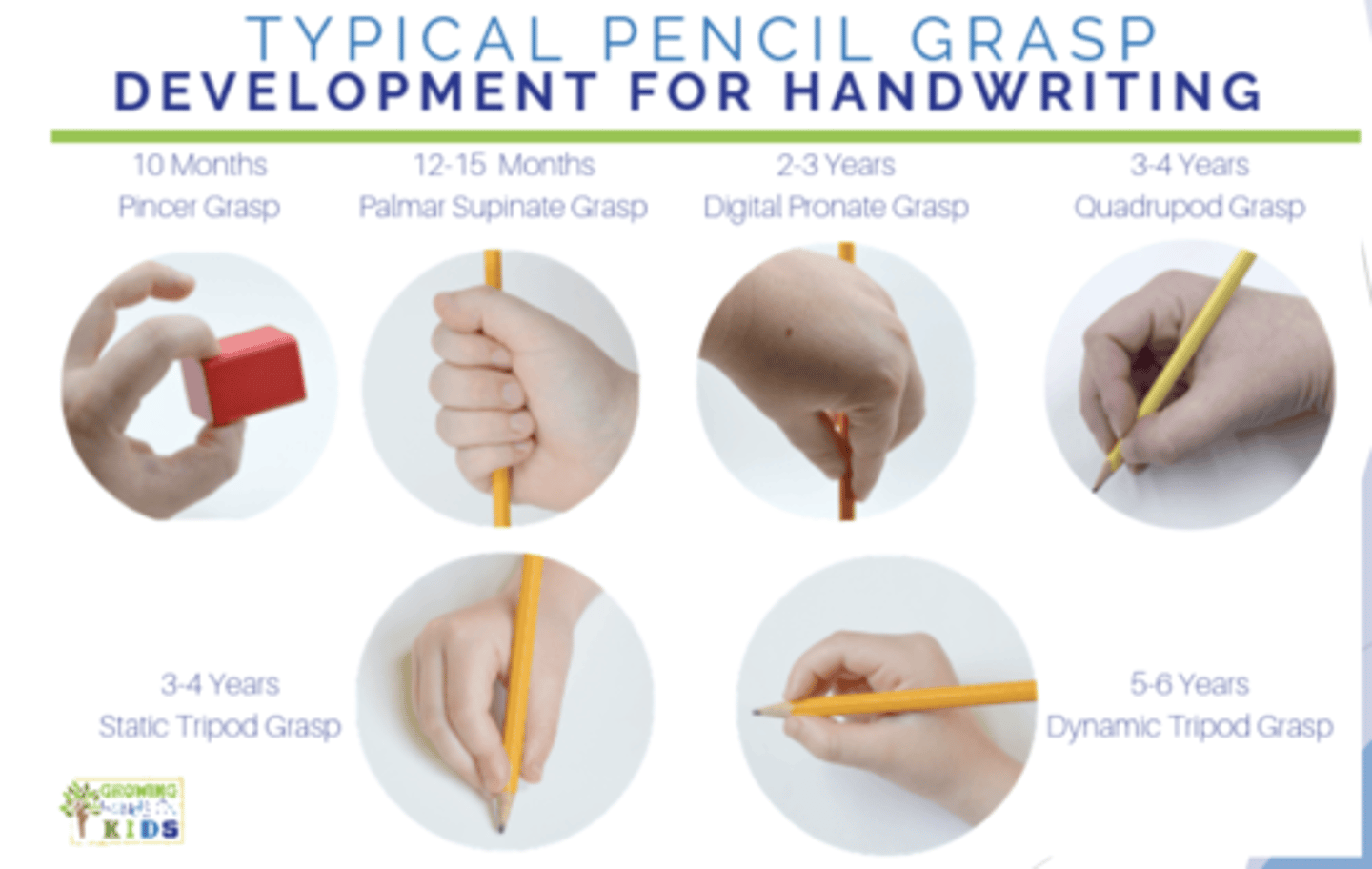
what is goal of fine motor control training?
develop the pts accuracy and speed of visually guided fine motor movements
what are 3 visually guided fine motor therapy procedures?
- continuous motion worksheets
- mazes
- haptic writing
continuous motion worksheet
can have pt do CW or CCW circles
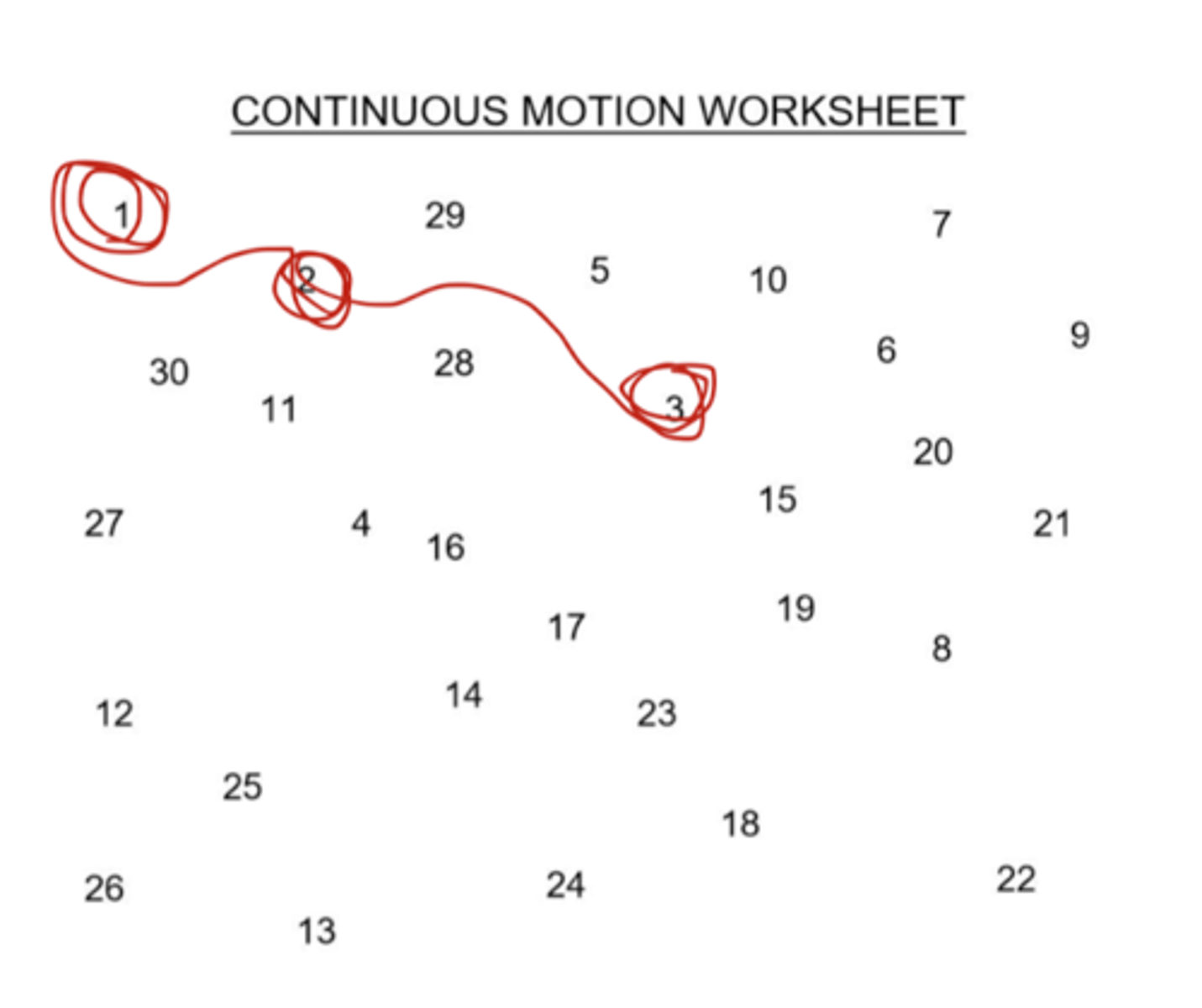
mazes- emphasize not touching the walls and staying in the middle
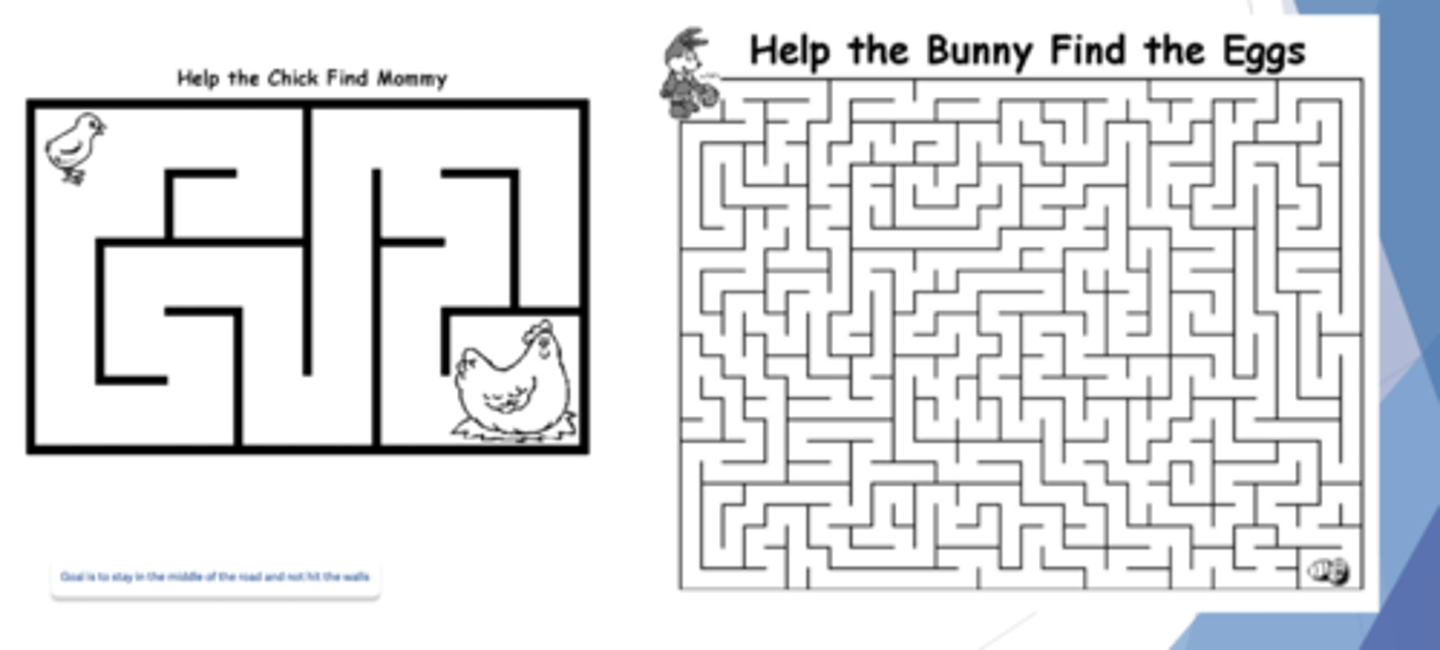
haptic writing worksheet
- can change patterns
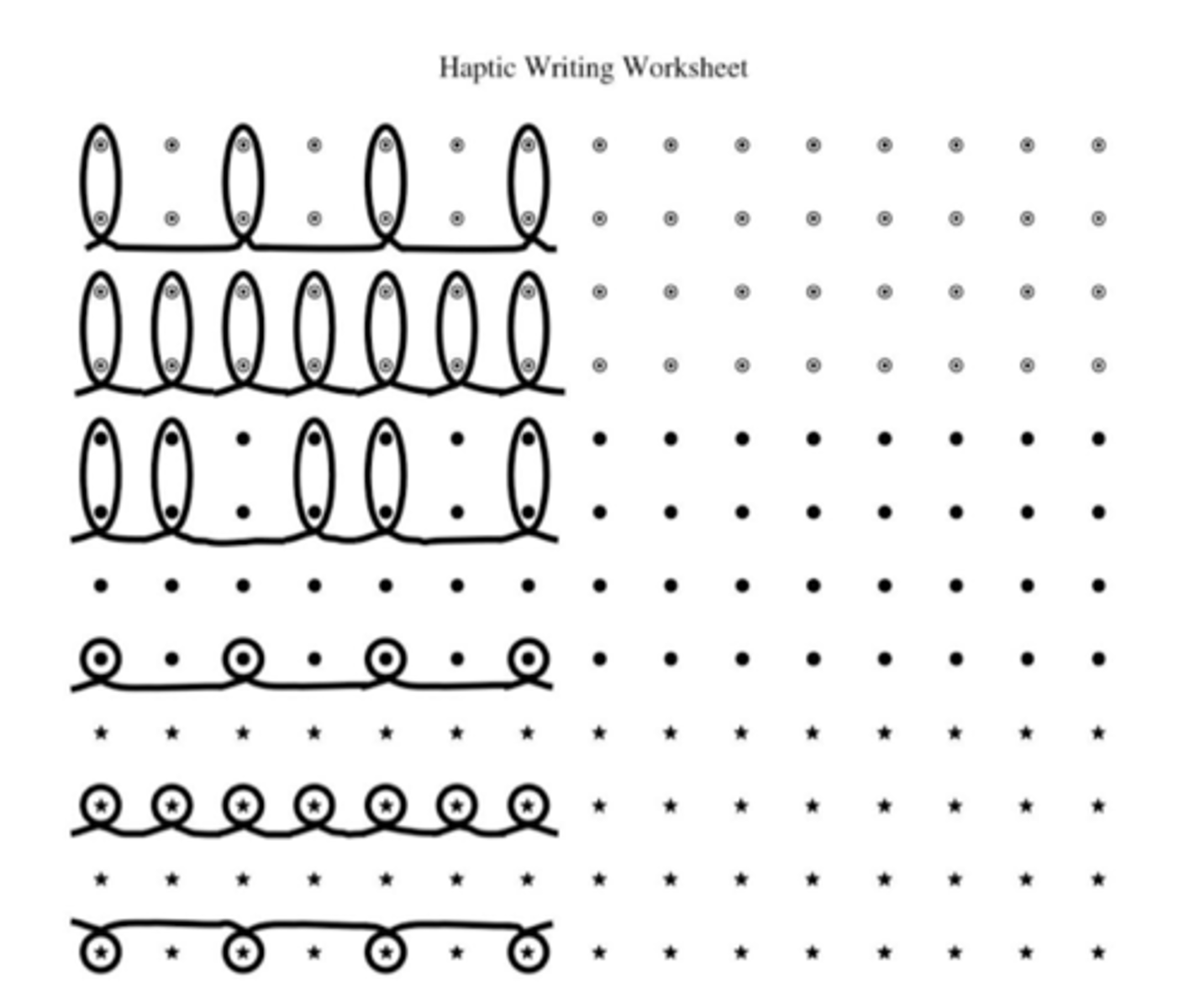
what is the goal of training planning of complex spatial patterns?
develop the pts ability to plan visually guided motor actions to reproduce complex spatial patterns
examples of planning of complex spatial patterns?
- rosner dot patterns
- ideal forms
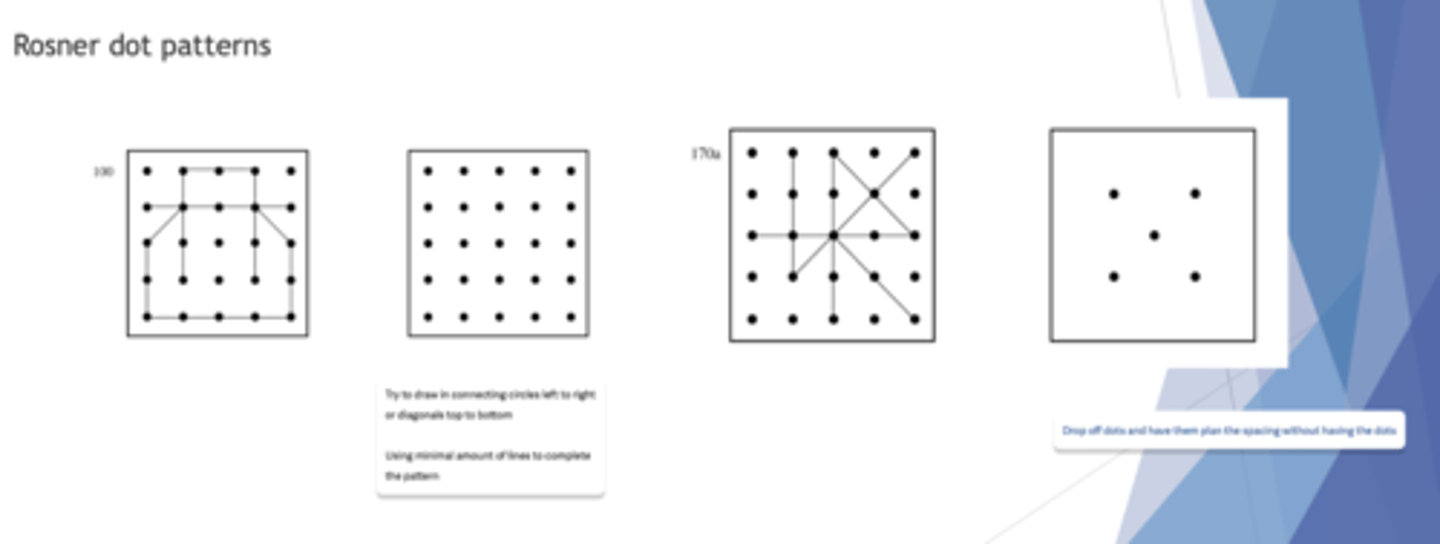
ideal forms
